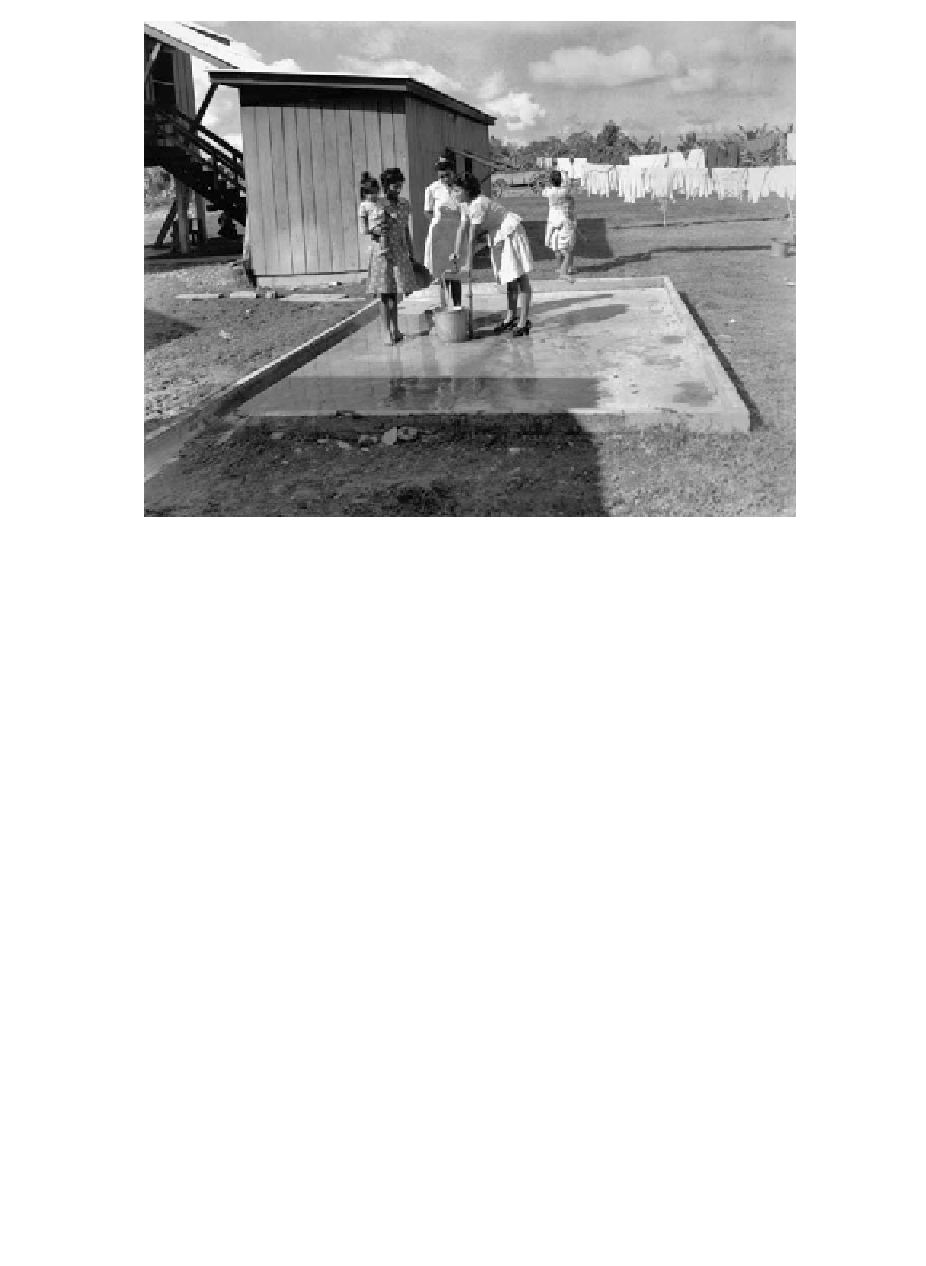Agriculture Reference
In-Depth Information
figure 5.8.WomenfillingwaterbucketsinUnitedFruitCompanylaborcamp(1946).
UnitedFruitCompanyPhotographCollection.BakerLibrary,HarvardBusinessSchool.
view, noting that the Tela Railroad Company sold ''essential foods'' at or
below cost to workers. Losses were made up on ''non-essentials.''
104
Com-
panyo
cialsreportedthatforthefiscalyear1946-1947,commissariessold
nearly$US3millionworthofgoods,andmaintainedanetlossof$10,000.
However, Thomas McCann, a Boston-based United Fruit Company ex-
ecutive who started with the company as an o
ce boy in 1952, asserted
that company accountants shifted operating costs in order to conceal the
sizeableprofitsturnedbythecommissariesintheearly1950s.
105
Regardless
of profit levels, the commissaries enabled the fruit companies to recapture
a significant portion of the cash wages that they paid out to agricultural
workers. One former Standard Fruit employee recalled that companyo
-
cials collected cash receipts from commissaries in order to meet monthly
payrolls.
106
The company commissaries enjoyed some critical advantages over
other North Coast merchants. Loosely interpreted clauses in the compa-
nies' railroad concessions enabled them to import many consumer items
duty-free. In addition, the commissaries were located in or very close to
labor camps. Workers could reach them by foot, in contrast to many of

